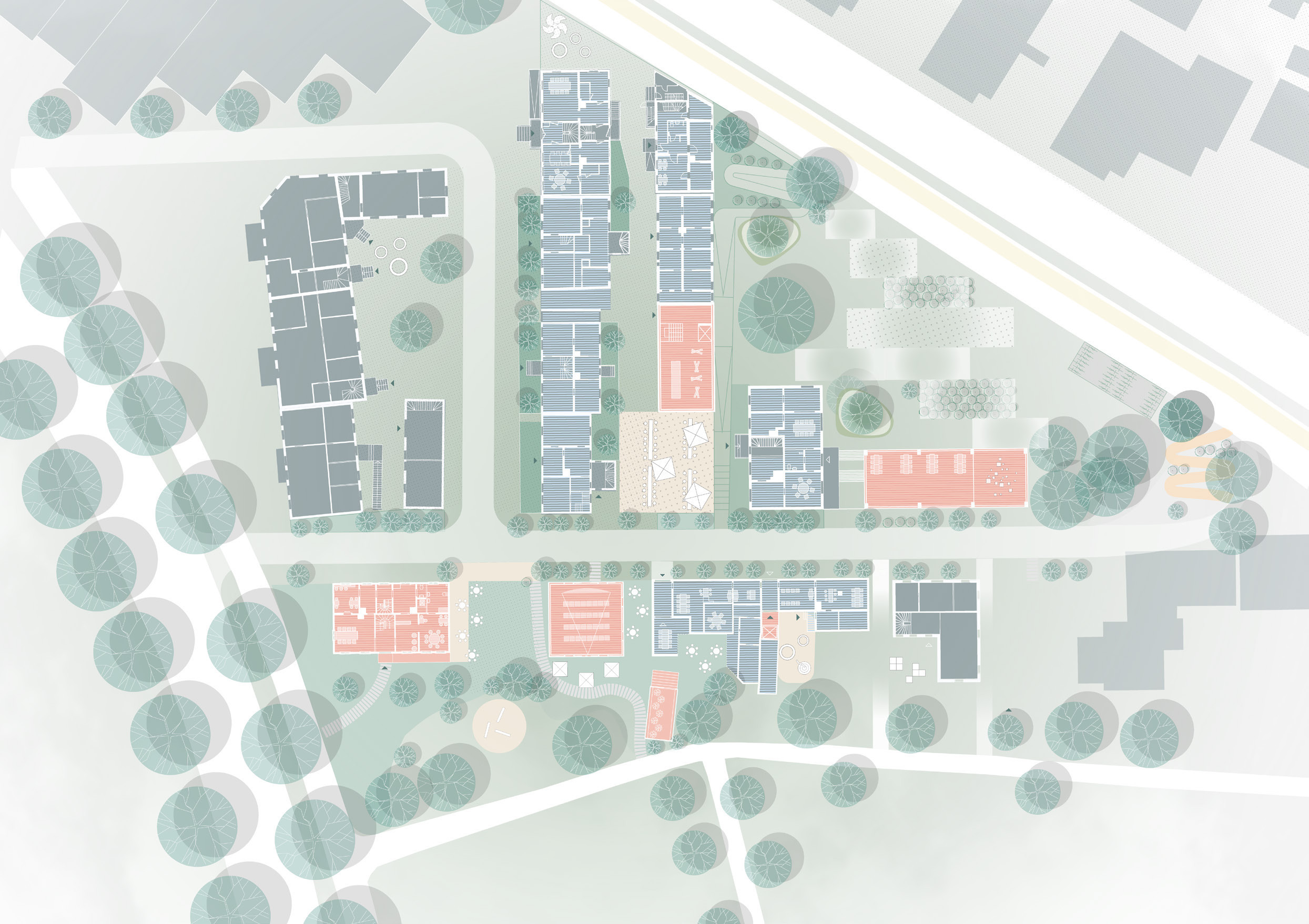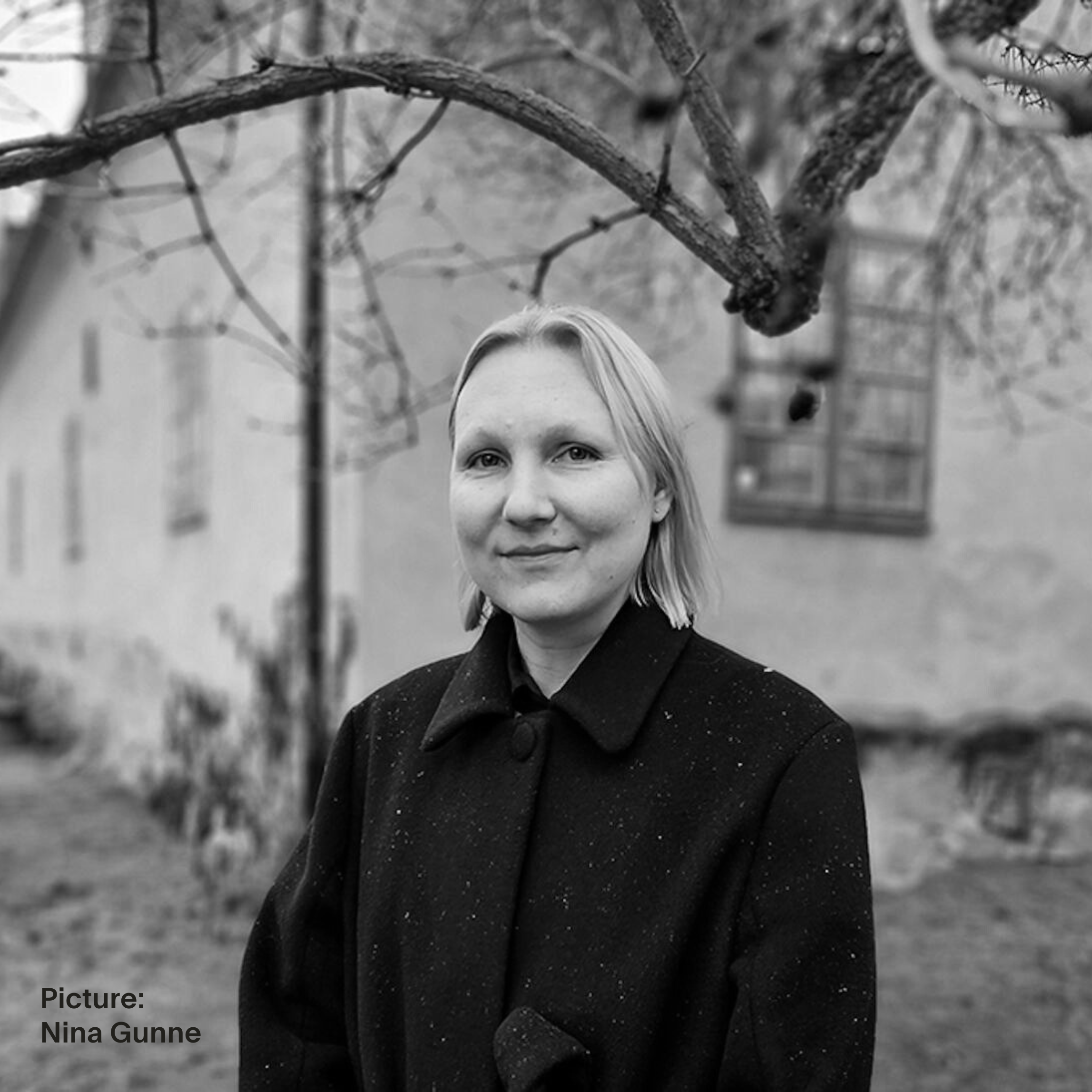Living Lab in Grensen advances to the next phase!

The winning proposal "Grensen 2030: Circularity Apparatus" by architect Eugenia Bevz for the Europan 17 site Grensen is advancing to the next phase of implementation.
Grensen 2030: Circularity Apparatus, the winning proposal for Europan 17, presented a forward-looking strategy for revitalizing the Grensen area in Trondheim through adaptive reuse, material circularity, and sustainable phasing. Positioned as NTNU’s pilot site for experimentation in careful adaptation, the project aims to transform the historically unique Grensen area into a cohesive extension of the university campus.
At its core is a commitment to reuse - of buildings, materials, and urban relationships - ensuring that all interventions remain flexible, responsive, and rooted in the district’s historical legacy. The project proposes a phased approach to restoration, growth, and sustainability, guided by principles of resilience, community engagement, and environmental responsibility.

Project reflections from Eugenia Bevz:
"The Living Lab framework at Grensen is an ongoing case study— one that continues to evolve through feedback, testing, and collective participation. The project’s strength lies in
its open-endedness: it is not a fixed masterplan, but a process that grows with its users, embodying the principles of circularity and care that inspired it from the beginning.
"The Europan 17 commission has provided the opportunity to test innovative architectural and urban design ideas in practice, applying tools of circularity and adaptive reuse within a highly sensitive historical context. It has involved collaboration with a diverse range of stakeholders, including those outside the architectural field, and engagement with projects operating within a political domain. Most importantly, it has given me the confidence to establish my creative practice, Rein Architects, together with my partner Konstantin Mirosh, to continue exploring these themes through collaborative work."
The initial period following the competition announcement focused on establishing a robust roadmap for implementation. The proposal evolved through research, workshops, and direct collaboration with NTNU representatives, heritage specialists, and students. A key finding from this phase was the uneven deterioration of the existing timber structures, which reinforced the need for a careful, case-by-case approach blending preservation with transformation.
The Grensen 2030 is envisioned to unfold in four phases. This phased approach balances heritage conservation with the need for urban innovation, allowing the district to evolve over time without losing its historical character or community identity.

Phase 1: Understanding Before Intervention, which ran from late 2023 to early 2025, involved extensive site analysis, archival research, and crucial collaboration with NTNU and heritage specialists.
Eugenia Bevz describes the phase:
"Grensen’s character is defined by its spatial rhythm, materiality, and light conditions. The consistent use of timber, solar orientation of courtyards, and the sequence of open and built spaces are preserved as defining elements. These findings laid the foundation for the phasing strategy, positioning careful preservation, alongside the integration of modern accessibility standards, as an enabler of contemporary use."

Phase 2-3: Activation Through Careful Adaptation, Relocation, and Programmatic Flexibility (5–10 Years)
The upcoming Phase will introduce sensitive renovation and key physical interventions. A notable intervention is the planned relocation of the Grensen 6, a 19th-century timber house marked on the photo above. The building will move about 60 meters to facilitate new campus development, improve accessibility, and frame a new public entrance.
Eugenia Bevz describes the phase:
"Lightweight temporary pavilions, open-air stages, and reconfigured streetscapes support events, performances, and informal gatherings. A temporary pavilion is proposed to be designed and built as part of the architectural students' curriculum - reusing leftover materials from campus development and recognizing students as important actors in the regeneration process. These additions are intentionally reversible and low-impact, allowing for experimentation before permanent commitment."

Phase 2-3: Integrating Long-Term Urban Living and Cultural Infrastructure (10–15 Years)
This phase improves the area’s ability to sustain a diverse urban life. Specific timber structures are converted into student housing, while others host mixed-use facilities that integrate educational, residential, and civic programs. The introduction of public and semi-private spaces at ground level is designed to support social interaction.
Eugenia Bevz describes the phase:
"A temporary exhibition pavilion is proposed to showcase student projects and support cultural engagement. Ecological revitalisation is introduced through pollination gardens on the triangular site facing Frederiks gate."

Phase 4: Sustainability Improvements and Context-Sensitive New Development (20+ Years)
The phase establishes a long-term strategy for increasing site densification while preserving inherent characteristics. It suggests comprehensive sustainability enhancements through the site and features architectures made for future adaptability, incorporating flexible, open-ended programs.
Eugenia Bevz describes the phase:
"Carefully scaled new developments include a Student Social Center and a flexible mixed-use cluster on the Triangular Site. These structures use engineered timber and modular systems, echoing Grensen’s historic grain while allowing for future adaptability. Designed for evolving use, buildings are supported by a grid system that accommodates vertical and horizontal expansion or reduction over time."
Eugenia Bevz

Eugenia Bevz’s journey began at the architecture school in Kiev, Ukraine, in 2002. After earning a master's degree and teaching for a few years, she won a scholarship to further her education in urban studies at the ETH school of architecture in Zurich.
Currently, she operates her own practice in Stockholm, bringing with her architectural expertise acquired from experiences in New York and at OMA in Rotterdam.